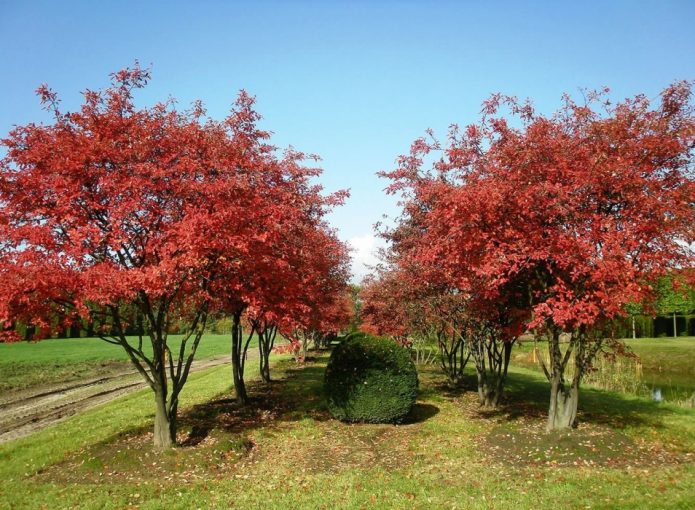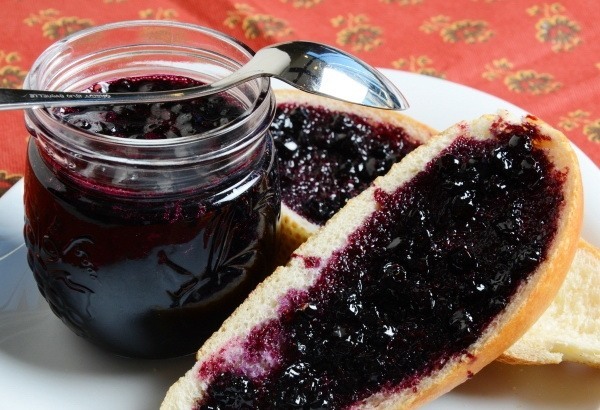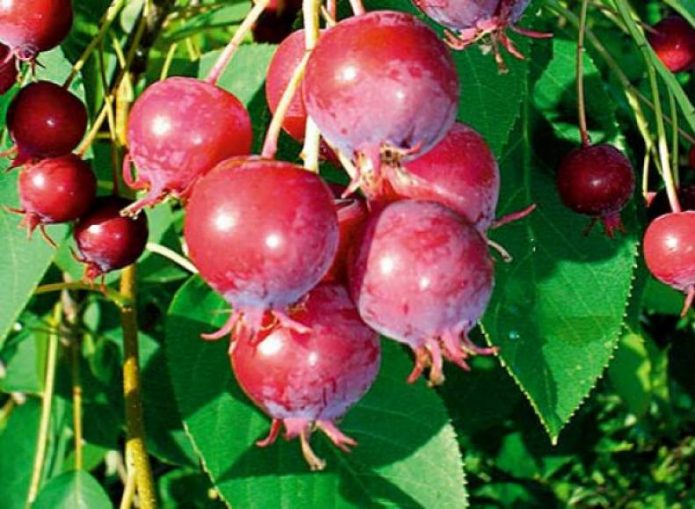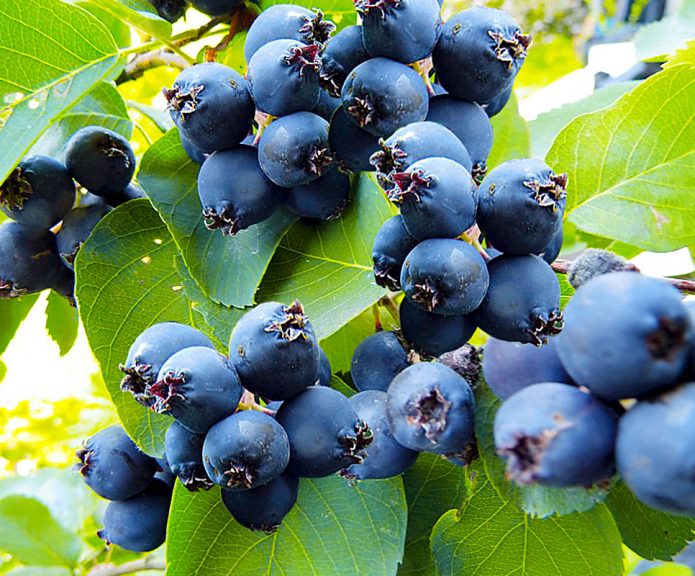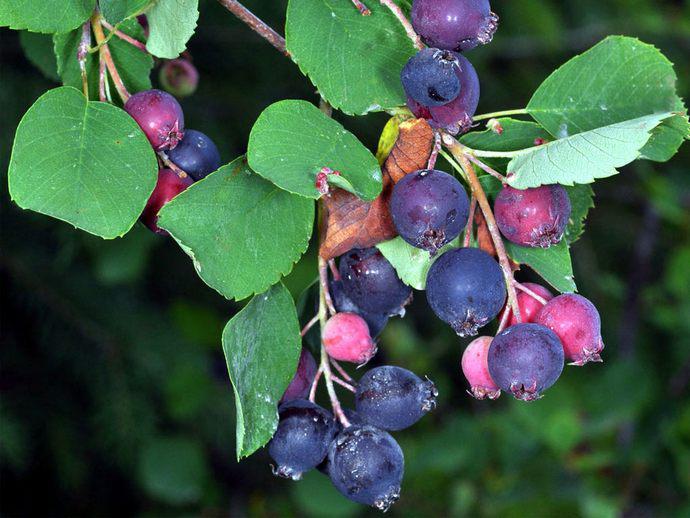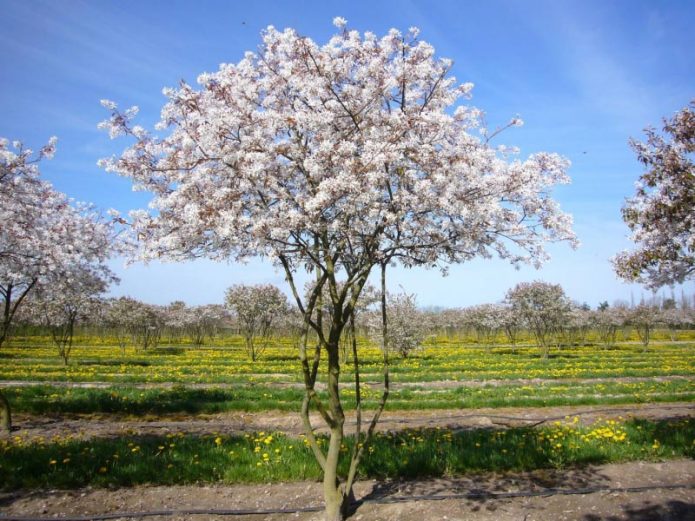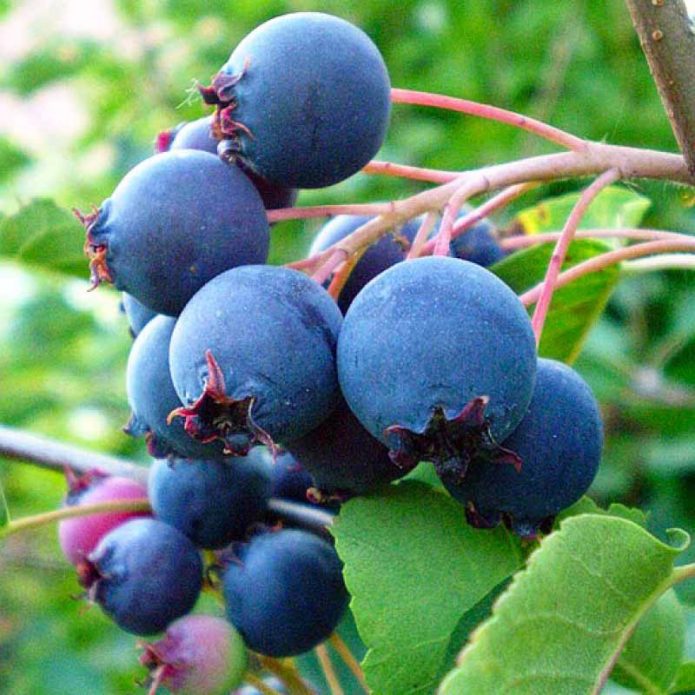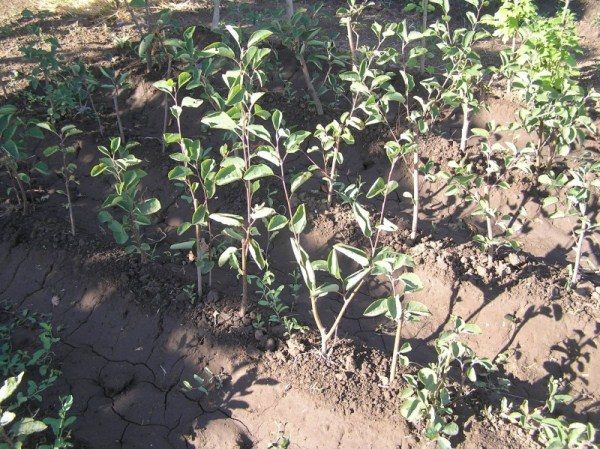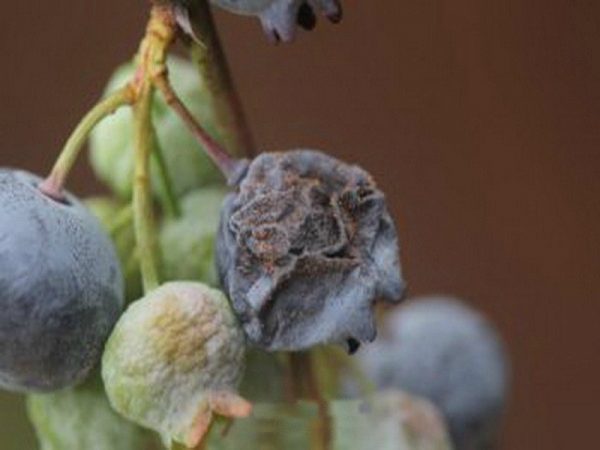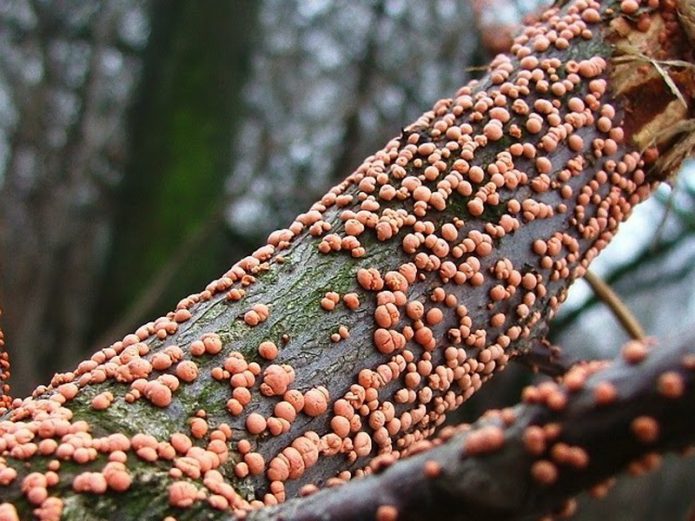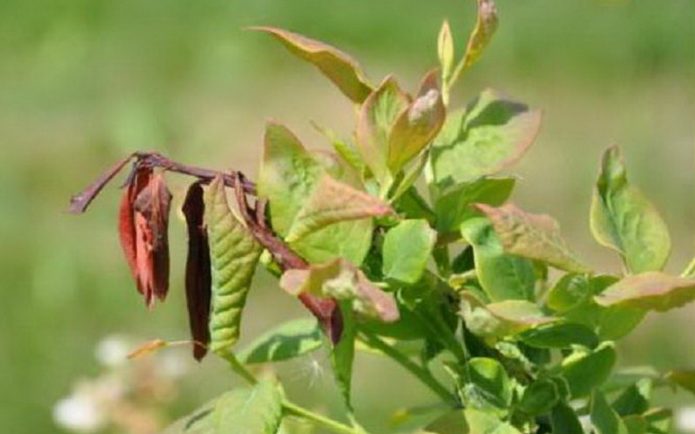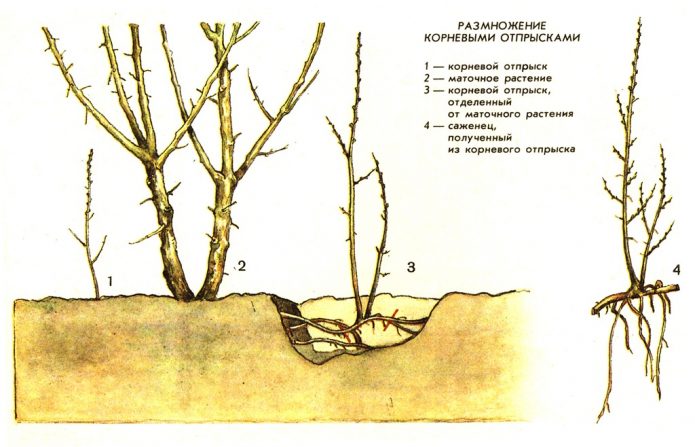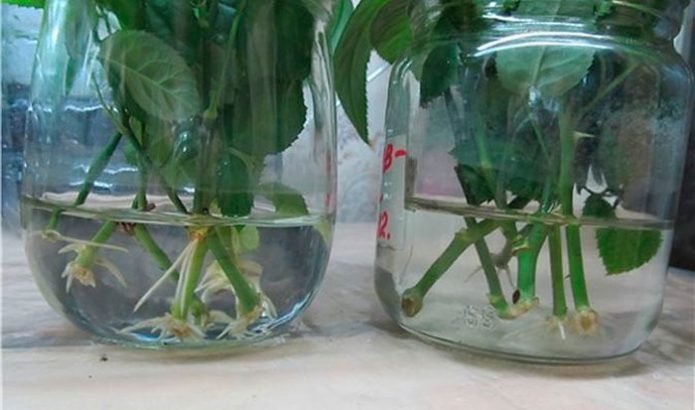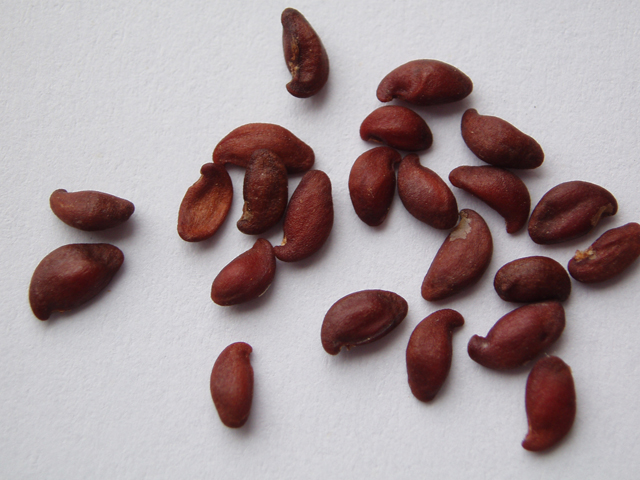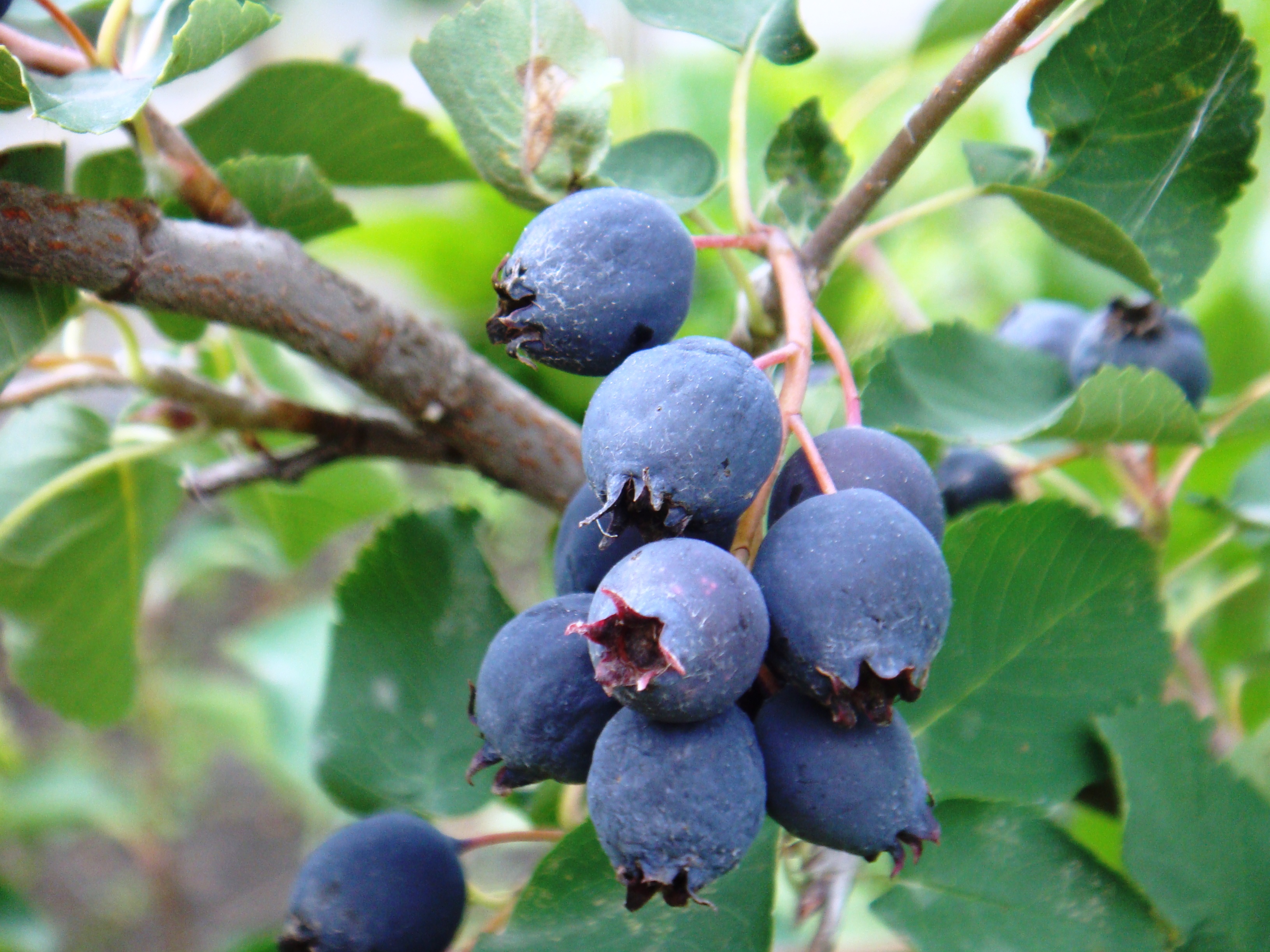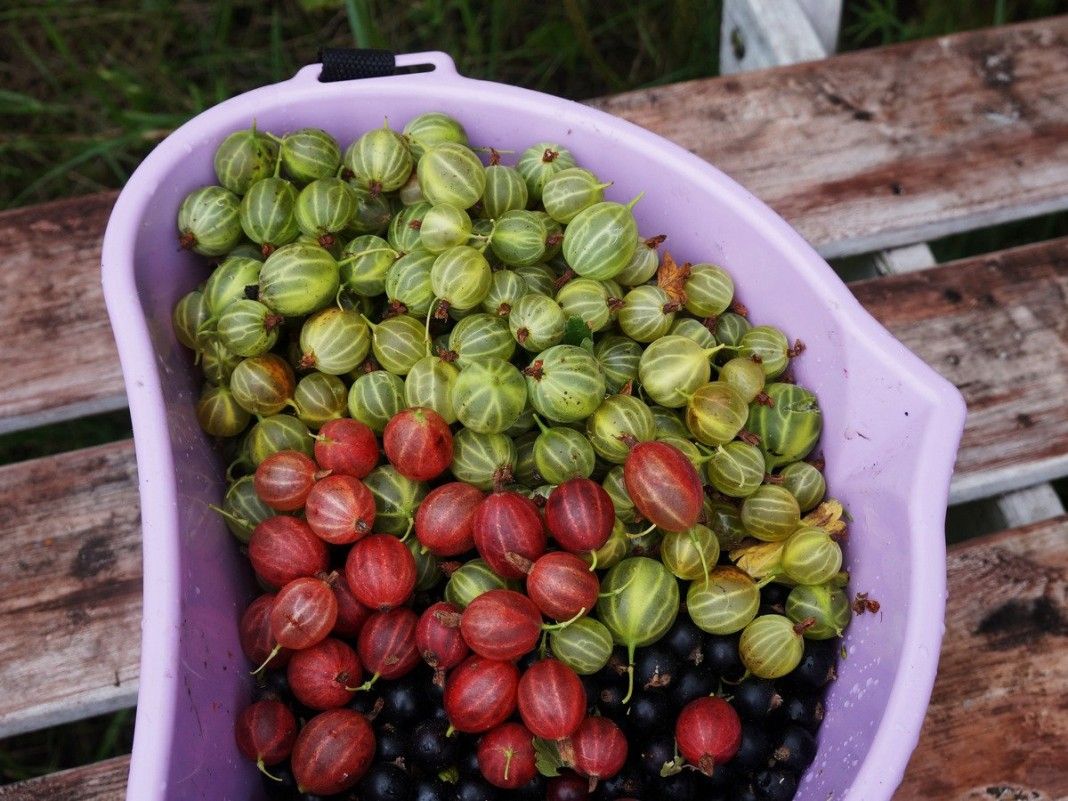Irga is rarely given the best place in the garden. Most often, it decorates the backyard of the site, which is due to the unpretentiousness of the plant, which does not require much attention to itself. Planting in the open field and caring for the irga will not be difficult. Bush berries have healing properties. The high decorativeness of the trees allows you to decorate the site with them.
Content
Description of a plant in nature
Irga is a low tree or shrub belonging to the genus Amelanchier, which determined the second name of this plant - amelanchier. The people are often referred to as korinka. Translated from Latin Amelanchier - bringing honey, which emphasizes the usefulness of irgi fruits for human health. In Great Britain it is called the June berry, in the USA it is called saskatoon or shady bush.
The plant is deciduous, in the wild it mainly grows on stony soils, open areas of the forest, forest-steppe. Differs in endurance and frost resistance, feels good in the tundra zone. It is successfully grown on garden plots in any region of Russia, and is valued as an ornamental and fruit-bearing tree.
Useful properties of berries and bark
Irga is one of those amazing plants in which everything is useful - from bark to fruits. It contains many vitamins, antioxidants, organic acids, tannins, trace elements. The plant contains a large amount of carotene, pectins, fiber.
Effect on the body:
- has anti-inflammatory effect;
- promotes weight loss;
- enhances immunity;
- prevents blood clots;
- removes salts of heavy metals;
- thins the blood;
- cleans the walls of blood vessels.
Decoctions and infusions are prepared from the bark, the berries are consumed fresh or processed into juice. Medicines based on irgi leaves help to get rid of viral and infectious diseases, diarrhea, pancreatitis. Decoctions have antimicrobial effects and are used in the treatment of wounds and bedsores.
Popular varieties of garden irgi for open ground (with photo)
In the wild, there are up to 25 species of irgi, but no more than 10 are grown in garden plots. In Russia, several varieties of this plant are most popular.
Spicate
A tree that grows up to 5 m tall. The crown is spreading, with large oval leaves that can reach 50 mm in length. Specialists of VNIIS them. IV Michurin tried to improve the taste properties of the fruits of this variety, but all attempts were unsuccessful. Spikelet berries are useful, but they have a more mediocre taste among other varieties of this plant. Therefore, it has not found wide distribution and grows mainly in the wild.
Blood red
A distinctive feature of the variety is slightly flattened fruits. The berries have a pronounced sweet and sour taste, are loved by children and adults, and are suitable for conservation. The fruit contains a lot of juice containing a significant amount of pectin, thanks to which it does not curdle. On the basis of this plant, varieties such as Holland and Success were bred.
Canadian
The variety is distinguished by large fruits with good taste. When ripe, the berries are brownish-red, ripe fruits turn dark blue. The tree tolerates frost worse than other members of the family, it is recommended for growing in the middle lane and warm climatic zones. On the basis of this species, the Honiwood variety was bred, the berries of which are sweet, reminiscent of honey in taste.
Alder-leaved
Sprawling shrub reaching 4 meters in height. The berries of this plant are considered the most delicious among all the other varieties of irgi. In addition, the fruits are large and juicy, with an average weight of 1 g. The berries contain a large amount of anthocyanins, which makes the juice a natural dye. The plant is cold-resistant, unpretentious, feels good in the harsh conditions of Siberia and the Far East.
Lamarck
Irga Lamarca is in many ways similar to the Canadian one, but differs from it in the larger size of the leaves: up to 9 cm in length, up to 4 cm in width. The tree is highly decorative, traditionally adorns gardens and parks in Europe. It blooms in mid-spring and bears fruit in late summer. Average yield - 6-7 kg per bush. Differs in unpretentiousness and high winter hardiness.
Smokey
Canadian variety, which is a tall, multi-stemmed bush with a spreading crown. It is high yielding, with delicious sweet and sour fruits. The berries are large, reaching 14–16 mm in diameter. The color of ripe fruits is dark blue. The shrub is hardy, frost-resistant. The plant begins to bear fruit in 3-4 years after planting.
Where to grow irgu
In nature, irga is common in the Caucasus and Crimea. It is rarely found in the European part of Russia, in the Asian part it is successfully grown by gardeners. Due to its winter hardiness, it grows in almost every garden plot in regions with a harsh climate. It bears fruit stably where apple, pear and other garden crops do not survive. For this reason, the game is often called northern raisins.
There are no obstacles to growing this tree in the Moscow region, the Urals, Siberia and Kazakhstan. Irga feels good in any region of Russia. It is one of the few plants that successfully tolerates temperatures as low as -7 ° C during flowering.
In the middle of the twentieth century, gardeners of the Moscow region and other regions of the European part of Russia were carried away by the cultivation of irgi. It gained popularity thanks to information about its healing properties and quite tasty fruits. The enthusiasm of the gardeners did not last long and today the shrub is rare.
Landing
Planting irgi in open ground is a simple process. This unpretentious plant will take root in the most depleted soils. But under unfavorable conditions, it will not give the desired yield. The decorativeness of the tree will also suffer. In order to get the full benefit from the plant, they follow the rules for planting irgi and provide proper care.
Seat selection
Many gardeners allocate not the best site for this tree. The irgi has a powerful root system, which gives a lot of growth every year. Young shoots have to be removed regularly and in a timely manner. A berry planted in a well-lit place grows less.
It should be taken into account the fact that this plant is a long-liver.It will grow and bear fruit for at least 60 years, reaching a height of 7–8 m. Such powerful trees have a corresponding root system. It will inevitably take away the lion's share of the moisture and nutrients contained in the soil. Other nearby plants will need to be fed more frequently.
Reference! The best neighbors for irgi are cherries, plums, sea buckthorn and chokeberry.
Soil preparation
Acidic soil is undesirable for irgi. The soil is dug up before planting the plant, while simultaneously adding lime at the rate of 300-500 g per 1 m2... If the soil is soddy-podzolic, add 400-500 g of wood ash and lime, mixed in equal parts.
To feed a young plant, a substrate is prepared from several ingredients:
- 200-300 g superphosphate;
- 150 g of potassium salt;
- 10-15 kg of humus.
And also for planting you will need a mixture prepared in equal proportions from rotted compost and sand.
Layout scheme
Irga can be grown not only as a fruit tree, but also as a hedge. From this plant, it turns out to be impassable, dense and high. For this purpose, proceed as follows:
- planting is carried out, departing from the border of the site 150-180 cm;
- leave a distance between plants -50–70 cm;
- they form a crown annually, shortening the annual growth by 10–20 cm.
When planting next to other plants, the distance between adjacent seedlings should be 4 m, and the row spacing should be 2 m wide.
Landing times and rules
According to the recommendations of VNIIR (St. Petersburg), the optimal periods for planting are early May and the second half of September.
Practice has shown that generally accepted deadlines are optimal, but not mandatory. Irga can be planted throughout the warm season. She quickly takes root and grows.
The planting depth of a seedling depends on whether it is grafted or not. In the first case, it is important that the root collar is at ground level. Unvaccinated young growth should be deepened by 5–8 cm.
The procedure for planting works:
- A bayonet shovel is used to cut off the fertile soil layer.
- They dig a hole 50x50 cm, 30-40 cm deep.
- The prepared substrate is placed on the bottom.
- The cut turf is combined with a mixture of sand and compost.
- Set the seedling to the desired depth.
- The pit is covered with a mixture of turf, compost and sand.
- They compact the soil.
- Sprinkle with 1-2 buckets of water.
To retain moisture, the trunk circle is mulched by laying peat or humus around the seedling.
Important! The branches of the plant are shortened after planting, leaving only 4–5 well-formed buds.
Video: planting irgi in the ground
Care
The berry quickly responds to the creation of favorable conditions for it, becomes decorative, grows well. When planting in the open field, care for the irga is not a problem. In the early years of growth, attention should be paid to the formation of the bush. Every spring, all branches are cut, leaving 2-3 strong shoots. In this way, a dense bush with a beautiful crown is obtained.
Watering
Irga tolerates not only frosts well. This plant is quite drought-resistant, which is important when growing in regions with hot climates. This is largely due to its developed root system, which is able to penetrate into deep layers and extract water there. Irga is enough to water once every two weeks. 1-2 buckets of water are poured under the root for a young plant and 3-4 for an adult.
Top dressing
They begin to feed the irga 3-4 years after planting. Starting from this time, every 2-3 years, the soil around the plant is fertilized with organic matter (manure, bird droppings) at the rate of 8-10 kg per 1 m2... To do this, a trench 20-30 cm deep is dug around the crown circumference on the ground, fertilizer is placed in it and covered with previously removed soil.
Top dressing:
- in spring - 20-30 g of ammonium nitrate per 1 m2 or liquid manure (1 part manure and 5–6 parts water);
- autumn - 40 g of superphosphate and 20-30 g of potassium salt per 1 m2.
Important! Top dressing is combined with watering and carried out in those years when organic matter is not introduced.
Pruning
Irga is a tall plant, which makes harvesting difficult. Therefore, it is recommended to restrain the growth of the tree to a height of 2.5–3 m. This task is performed by annual pruning. Two techniques are used:
- cut off old shoots and leave young ones that appear annually at the base of the bush;
- a plant aged from 7 years is rejuvenated by cutting off perennial shoots to the level of two-year wood.
Advice! When pruning, the branches are shortened so that the upper bud faces the outside of the bush.
Pest and disease control
Irga is highly resistant to diseases and pests. The most common are three types of diseases, which are eliminated by spraying the plant with appropriate drugs.
Gray rot
The first signs of this disease are brown spots on the leaves. Soon a grayish fluffy mass - mold - forms in these places. The reason for the development of the disease is excessive moisture. The first step is to change the watering schedule. If this does not help, the plant is transplanted to a site with a lower groundwater table. To combat the disease, use:
- spraying with 3% Bordeaux mixture;
- treatment with "Oxyhom" at the rate of 20 g per 10 liters of water;
- spraying with Topaz solution (2 ml per 10 l of water).
Tuberculariosis
The first signs of the disease cannot be overlooked: the leaves rapidly acquire a brown color, dry up and fall off. Soon red seals form on the branches. All affected parts of the plant are cut and burned outside the site. The crown is treated with 3% Bordeaux mixture or 5% copper sulfate.
Phylostictic spotting
Leaves are the first to react to this disease. Brown spots appear on them, rapidly increasing in size. Branches with such foliage are cut and fallen leaves are collected. They take it out of the site, burn it. The plant is thoroughly sprayed with a 3% Bordeaux mixture.
Irga most often suffers from the invasion of the Irgovaya moth and the seed-eater. The first infect the leaves of the tree, the second - the fruits. To get rid of harmful insects, use:
- "Karbofos" (60 g per 3 liters of water);
- "Actellik" (1 ampoule for 2 liters of water);
- "Fufanon" (5 ml per 5 liters of water).
Preparing for winter
Preparing irgi for winter is no different from a similar procedure for other berry crops, with the only difference that it is not required to bend the branches to the ground and cover them. In the fall, the foliage around the bush is removed and burned. The plant does not need shelter, since it even tolerates Siberian frosts well.
Reproduction
Irga is propagated by root shoots, seeds, green cuttings or layering. The easiest and most popular way is the first.
Root shoots
Irga annually produces dense root growth. One- or two-year-old shoots can be used to plant a new plant. The optimum seedling diameter is 7–8 mm. The shoot is carefully dug up and its root system is separated from the mother. They are planted in a new place in accordance with the rules for planting irgi.
Green cuttings
In mid-July, the shoot of this year is cut into cuttings 15–20 cm long. They are immersed in a solution of "Heteroauxin" prepared at the rate of 75 mg per 100 g of water. It is important to correctly install the cuttings in the container with the preparation. The kidneys on them should be directed upwards, not downwards. After 24 hours, the cuttings are planted in a greenhouse or greenhouse. The optimal pattern is 7x4 cm. Water regularly in moderation, keeping the soil moist. They are planted in a permanent place next spring.
Seeds
Irgi seeds are bought in the nursery or harvested independently from the fruits. Sowing is carried out in open ground.
- Prepare the place in advance, loosen the soil and moisten it.
- Seeds are planted to a depth of 15–20 mm, sprinkled with soil and watered.
- Cover the planting site with a layer of mulch.
Seedlings will appear next season. They can be dug up and transplanted to a new location. Under favorable conditions, seeds can germinate in the fall. Young shoots should be regularly watered and covered with a layer of mulch for the winter. In the spring, the plants are planted or grown until the next season.
Layers
The optimal period for this breeding method is mid-spring - early summer. They choose a strong shoot of the last year, bend it to the ground and sprinkle it with soil in one place. For greater confidence in success, they are fastened to the soil with a bracket. After the emergence of young shoots, they wait until they grow up to a height of 10–15 cm. Add more earth to the rooting site. In the fall, the shoot will be ready for transplanting, but it is carried out only next spring.
Irga is one of the few garden plants that does not require close attention. Those who have experience in growing it respond like this: planted and forgot. With proper care, this plant will delight you with its yield and tasty healthy berries.
